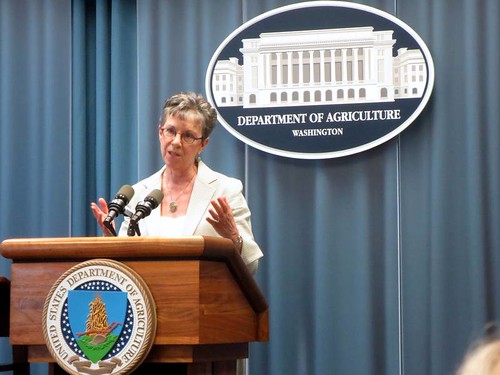
This post is part of the Science Tuesday feature series on the USDA blog. Check back each week as we showcase stories and news from USDA’s rich science and research portfolio.
I serve as Co-Chair of the Interagency Committee on Human Nutrition Research (ICHNR), which on March 4 released the first-ever National Nutrition Research Roadmap. This document will help guide government, academia, and the private sector to more effective collaboration on federally funded human nutrition research. Accordingly, the Roadmap itself is the result of more than a year of collaboration among 10 different federal departments and agencies, more than 90 federal experts, and numerous public comments.
The American people are keenly interested in knowing which dietary choices will help them to be healthy and prevent chronic diseases. Research on this relationship between nutrition, dietary choices, and health is important, because even a small impact on health could have large economic benefits to society. In fact, improved nutrition could be one of the most cost-effective approaches to address many societal, environmental, and economic challenges facing the US and nations around the globe. The Roadmap will help make federally supported nutrition research more effective and productive by identifying knowledge gaps and breakthrough opportunities that can be addressed through coordination and collaboration.
Nutritional needs differ according to a number of factors, including an individual’s age, health status, and their level of physical activity. Dietary guidance can be tailored to personal preferences so that individuals can make nutritional choices that are right for them. With this in mind, three overarching questions were identified in the Roadmap:
- How do we better understand and define eating patterns to improve and sustain health?
- What can be done to help people choose healthy eating patterns?
- How can we develop and engage innovative methods and systems to accelerate discoveries in human nutrition?
For each question, the Roadmap provides a subset of topics that point to specific research areas based on population impact, feasibility, and emerging scientific opportunity. Special consideration is also given to knowledge gaps related to at-risk demographic groups such as pregnant women, children and older adults. It also addresses gaps in nutrition-related chronic diseases that contribute most to morbidity, mortality, and health disparities, as well as improved understanding of nutrition’s role in optimal performance and military readiness. Through advances in research, especially innovation in technology and big data, we will be able to enhance our ability for interdisciplinary collaboration, analysis and communication.
While the Roadmap focuses primarily on reducing nutrition related diseases in the US, it could also guide other national governments, non-governmental organizations and collaborative global efforts to advance human nutrition research to improve and sustain health across the globe.
March is National Nutrition Month. Throughout the month, USDA will be highlighting results of our efforts to improve access to safe, healthy food for all Americans and supporting the health of our next generation.



